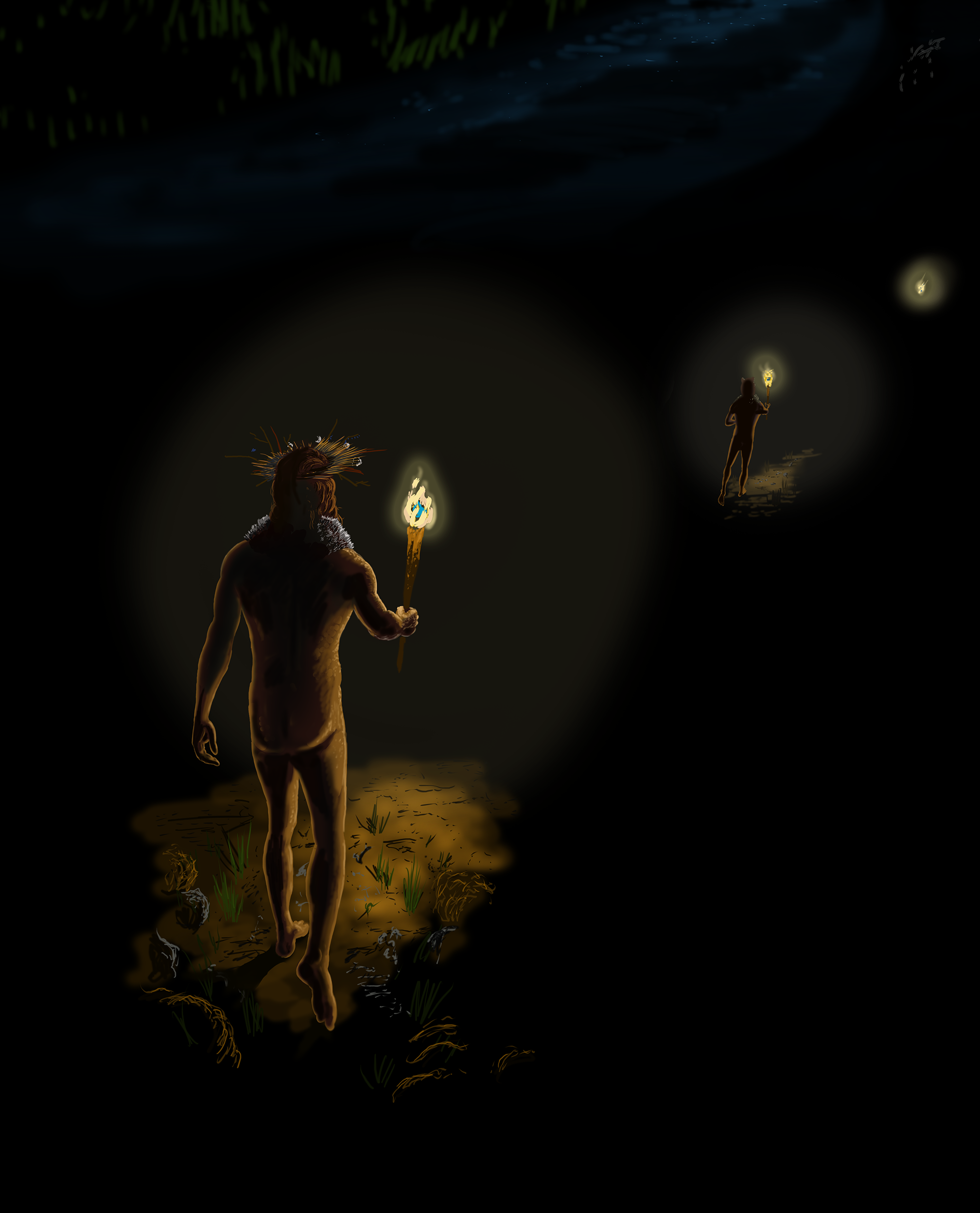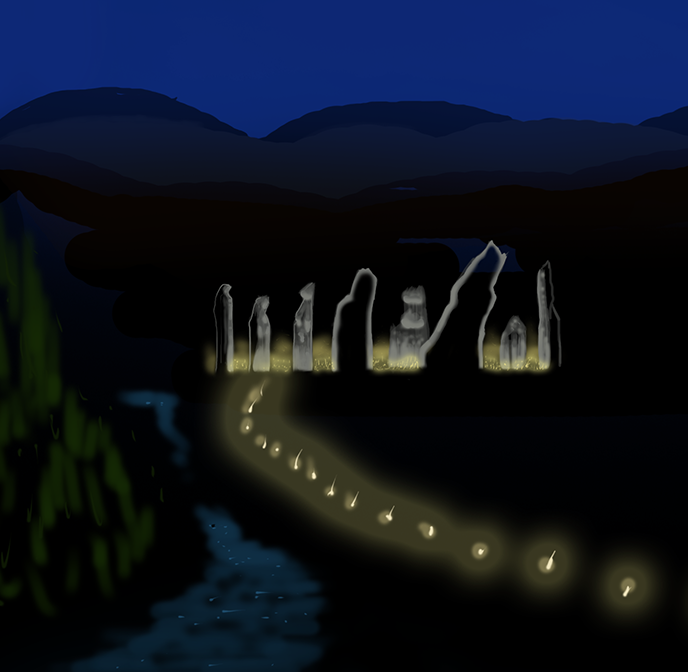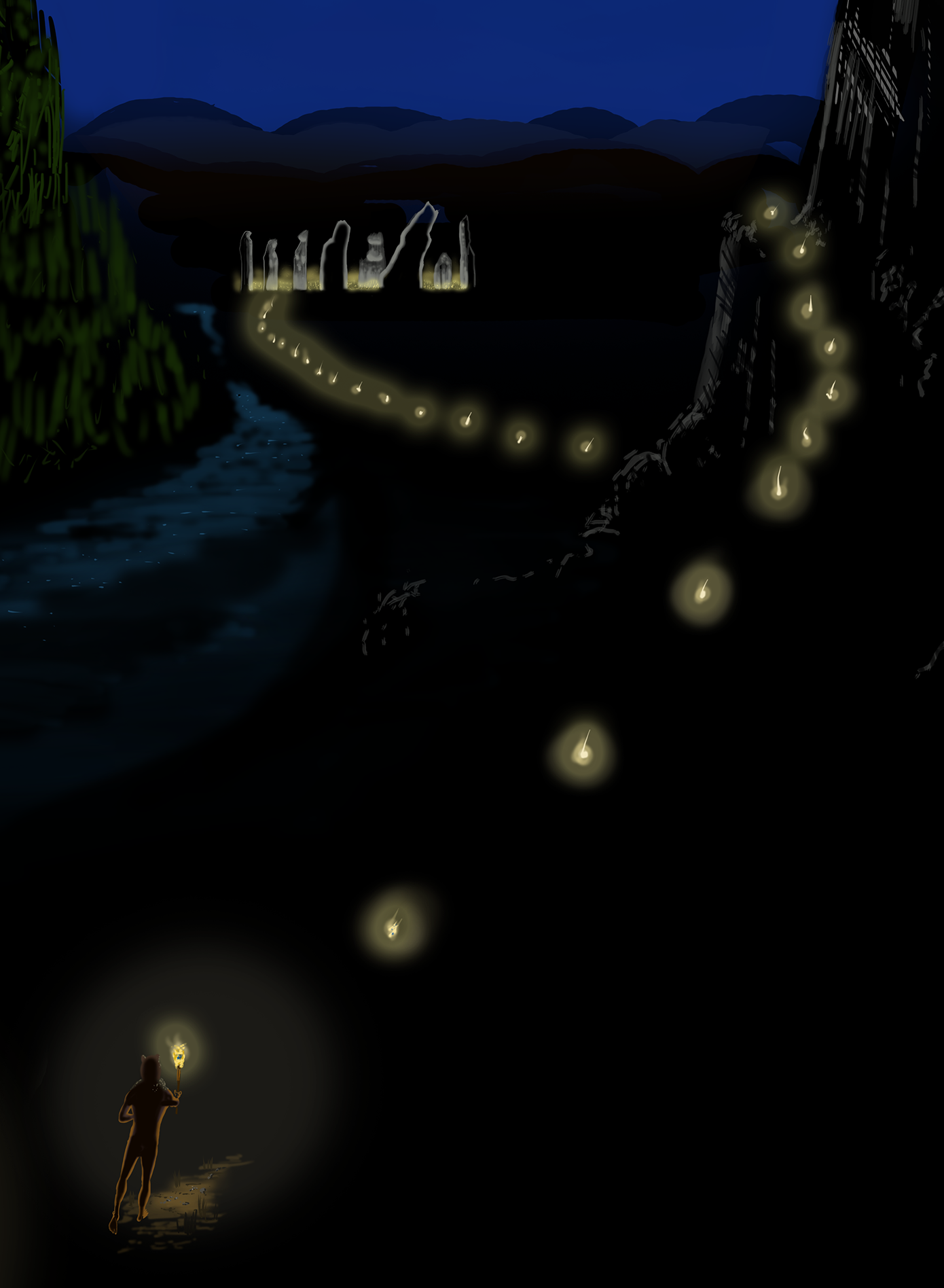Neolithic Solstice
Digital, 2025
All Rights Reserved
This is perhaps my first piece that truly is not designed to “fit” on my website. Painted at a full-res 36x48’’ (6400x9600px), it really is designed to be viewed at that size, so I have created some close-up studies below to compensate.
Happy Birthday Momma!!!
Ruckenfigur
A Ruckenfigur is a main subject within a painting facing away from the viewer. I utilize this technique here to preserve the anonymity of the main subject, an anonymity ensured and preserved by the archeology (or lack there of) concerning the homo-sapiens of this time. We know very little of the people who inhabited this time and this version of our world, and I show visually, the same percentage of this person as we might reveal through the hard science - but a glimpse. He wears a silver sable fur around his shoulders, the now extinct European fauna, suggesting he is a skilled hunter, but otherwise – I take a small liberty with the flower wreath, nothing of the sort has been found (or could be) in the archeology, but I viewed it as a pretty small leap – or likely reality, and I included this as the one piece of fictional interjected culture.
The reach of his torch light is very important, this is symbolic of the man’s wider-view of his own world, especially the part of the world not apparent with the most direct of observations – for instance, the world not lit by sunlight. That would have been a world of mystery to this human being – and therefore is represented visually as such here.
The Monument
Based on a combination of the megalith sites of Stoness and The Ring of Brodgar, both located on the island of Orkney in Scotland, I created this fictional Monolith Stone Circle to represent the solstice experience of the prehistoric world. Why did I not just paint Stone-Henge – fair question – I thought it too singular, too one of a kind, and not representative of the wider neolithic experience – rather just the experience of the ancient people of the Salisbury Plain. In addition, I prefer the more wild, more natural style of the stone circle featured – with the stones mainly unworked, simply placed – again representative of the masonry skill of the people of this time.
The Procession
These monolith sites were all removed and separated from townships and villages, hence a procession would most certainly have been a part of the rituals and ceremonies – arriving would have been a large part of the proceedings, by their nature, hence I feature the procession as the main action of the composition. What took place at the Monument we don’t know, hence I don’t feature it here – we just know that they congregated at these sites seasonally. The areas of occupation would have been in the shelter of the valleys and the forests, and hence I feature the population leaving this environment, onto the open plains where these monuments were constructed. The procession takes the individuals through a pass in the mountains, then down to the open plain by the banks of the river.



